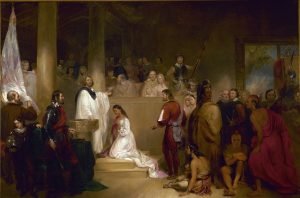The Sara Indians
While we know nothing positively as to the linguistic affinity of the Sara, all the evidence goes to show that, like most of the tribes of the central region of Virginia and Carolina, they were of Siouan stock. Their name is probably from the Catawba word sara, signifying a place of “tall grass or weeds” (Gatschet). While the Siouan tribes treated in the foregoing consolidated, after their decline, and joined the Iroquois in the north, most of the remaining people of that stock, including the Sara, migrated southward and merged with the Catawba tribe in South Carolina. The history of … Read more

